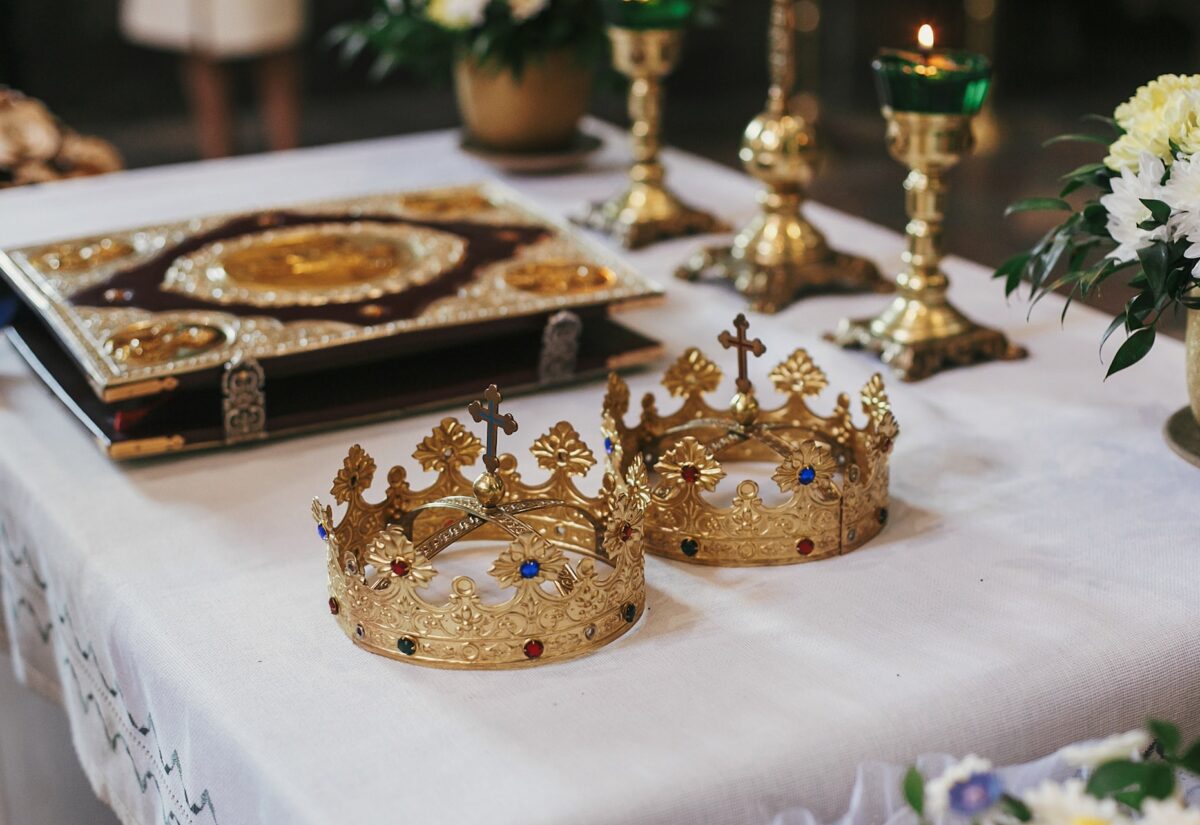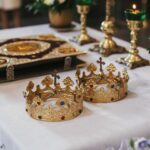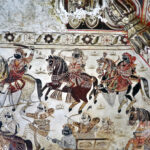 Unsplash/Getty
Unsplash/GettyWhen you think of royal ceremonies, your mind might go straight to coronations, weddings, and golden carriages. But dig into the annals of royal history, and you’ll find traditions that are anything but standard. Across centuries and continents, monarchies have used symbolic gestures, elaborate rituals, and sometimes downright bizarre customs to reinforce their authority. Whether steeped in religion, spectacle, or sheer eccentricity, these ceremonies tell us as much about the people and beliefs of the time as they do about the royals themselves. Here’s a deep dive into some of the strangest royal ceremonies throughout history, from divine birth rites to rituals involving feet, dirt, and more.
The king’s umbilical cord gets its own temple (Thailand)
In Thailand, where monarchy and spirituality are deeply intertwined, the birth of a royal child is surrounded by elaborate ceremonial practices. One of the more unique traditions involves the royal umbilical cord. After the birth, the dried cord is placed in a miniature shrine known as a “hor trai,” often built within the palace grounds. This isn’t just a keepsake; it’s treated as a sacred object representing the monarch’s divine connection to the land and ancestors. The shrine becomes a place of quiet reverence, and only select members of the court may visit. The belief is that the cord holds spiritual energy that protects the royal child and links them to their divine heritage.
Crowning yourself like Napoleon (France)
Napoleon Bonaparte’s 1804 coronation rewrote the script for royal power. Traditionally, monarchs are crowned by a religious figure, often a pope or archbishop, to symbolise divine endorsement. But Napoleon, ever the iconoclast, took the crown from Pope Pius VII and placed it on his own head. This bold gesture was a public declaration: his authority came not from the church or lineage, but from himself and the will of the people. The move was as much theatrical as it was political. The moment was immortalised in Jacques-Louis David’s massive painting, which remains one of the most striking representations of royal audacity. The Louvre still displays the original painting today.
Foot-washing by the crown (various countries)
It’s not every day you picture royalty on their knees, scrubbing feet. Yet for centuries, monarchs in places like Austria, France, and Spain took part in Maundy Thursday foot-washing ceremonies. In theory, these acts mirrored Jesus washing his disciples’ feet, which was seen a display of humility. But in practice, it was a highly orchestrated event. Poor people were hand-picked and often dressed for the occasion, while the monarch used perfumed water and gloves. In England, the tradition eventually evolved into the distribution of Maundy money, a symbolic coinage still handed out today by the reigning monarch. Though the modern ceremony is more about charity and less about toes, its roots are undeniably peculiar.
A night with a goddess (Japan)
Japan’s Daijosai ritual is one of the most sacred and mysterious ceremonies still performed in modern times. Held once per emperor, it marks the final step of enthronement. The new emperor spends the night in a specially constructed shrine, offering rice and sake to the sun goddess Amaterasu, his mythical ancestor. The emperor is said to commune with her spirit, reaffirming his role as both ruler and divine intermediary. The ritual is closed to the public and even most government officials, adding to its mystique. The event is deeply rooted in Shinto tradition and represents not just a political succession, but a spiritual rebirth.
Weighing kings like commodities (India)
In South India, rulers once took part in a grand spectacle called Tulabhara. The king would sit on one side of a massive scale, while the other side was loaded with gold, silver, grains, or spices equal to his weight. This wasn’t a royal indulgence but a statement of generosity: the materials were then distributed to the poor or donated to temples. The ceremony reflected the monarch’s role as protector and provider. In some versions, the king was weighed not once but multiple times with different goods to symbolise different responsibilities—justice, charity, health. Though it’s rarely performed today, some temples and wealthy patrons still honour the tradition during special festivals.
Childbirth as public theatre (France)
In the 18th century French court, privacy wasn’t an option, especially for royals giving birth. Marie Antoinette, like many queens before her, delivered her children in a room filled with courtiers, doctors, and assorted onlookers. The goal? To ensure the baby was genuinely royal and not switched or swapped. When Marie Antoinette went into labour in 1778, so many people crammed into the room that she passed out from lack of air. Afterward, the court agreed to tone things down, but the principle of public birth lingered. It was a strange blend of spectacle and surveillance, emblematic of a monarchy obsessed with legitimacy and lineage.
Eating dirt for the crown (Benin Empire)
In the Kingdom of Benin, located in present-day Nigeria, becoming an Oba (king) required a symbolic act of humility and connection to the land: eating a small portion of sacred earth. This ritual was meant to root the ruler physically and spiritually in the soil he would govern. It also served to remind him that power is not only divine but grounded in responsibility to the ancestors and the people. The act was part of a multi-day coronation filled with chanting, drumming, and sacrifices. Today, aspects of this tradition are preserved in ceremonial reenactments and oral history.
Royal funerals that go on for weeks (Tibet)
In Tibetan Buddhism, death is not an ending—it’s a transition. When a spiritual ruler like the Dalai Lama or Panchen Lama dies, the body is often preserved and displayed for extended periods. These funerals can last weeks, even months, and involve constant prayer, chanting, and ceremonial rites. Monks perform intricate rituals to guide the soul through the bardo, the intermediate state between death and rebirth. In some cases, the body is seated upright and carried between monasteries. These ceremonies are both funerals and sacred pilgrimages, linking the deceased to their future incarnation. It’s a deeply spiritual event that underscores the unique view of life, death, and rebirth in Tibetan royal tradition.
A royal sneeze triggers celebration (Burma)
In the Burmese royal court, the sneeze of a king wasn’t just a bodily function; it was a cause for ritual. If the monarch sneezed in public, courtiers would bow and shout blessings, sometimes even launching impromptu ceremonies or reciting verses of fortune. It was believed that a sneeze could be a sign from the spiritual world, and acknowledging it properly helped maintain harmony in the kingdom. Though the tradition faded over time, it offers a curious glimpse into how even the smallest actions of royalty were given cosmic weight.
Drinking blood to seal the throne (ancient Scandinavia)
In some pre-Christian Scandinavian tribes, new kings were expected to take part in animal sacrifices known as blóts. During these ceremonies, the blood of a sacrificial animal, often a boar or horse, was sprinkled over participants and even consumed. This ritual was meant to sanctify the ruler and unite him with the gods. While not exclusive to royalty, the king’s participation was seen as essential to ensure the fertility of the land and success of the tribe. These ceremonies were held at great seasonal festivals and were both religious and communal.
Royal ceremonies can be grand, mysterious, or downright surreal, but they all share one thing: symbolism.
These strange rituals, whether involving sacred rice, symbolic dirt, or even a sneeze, are about more than just tradition. They’re about power, legacy, and the theatre of rule. Across different cultures and centuries, they’ve served to bind leaders to their people, to the land, and sometimes to the divine. And while the pageantry might seem bizarre from the outside, each ceremony was deeply meaningful in its time, rooted in the values and beliefs of the world it came from.



